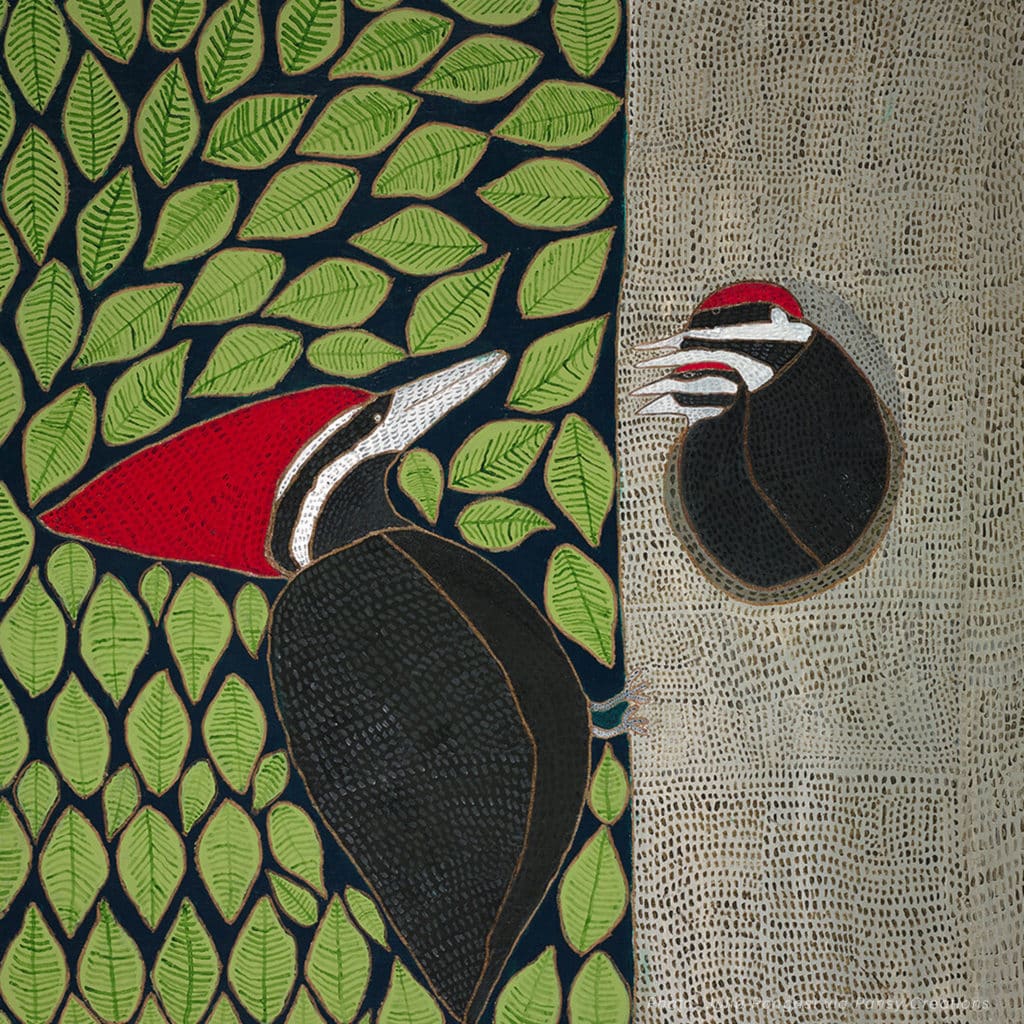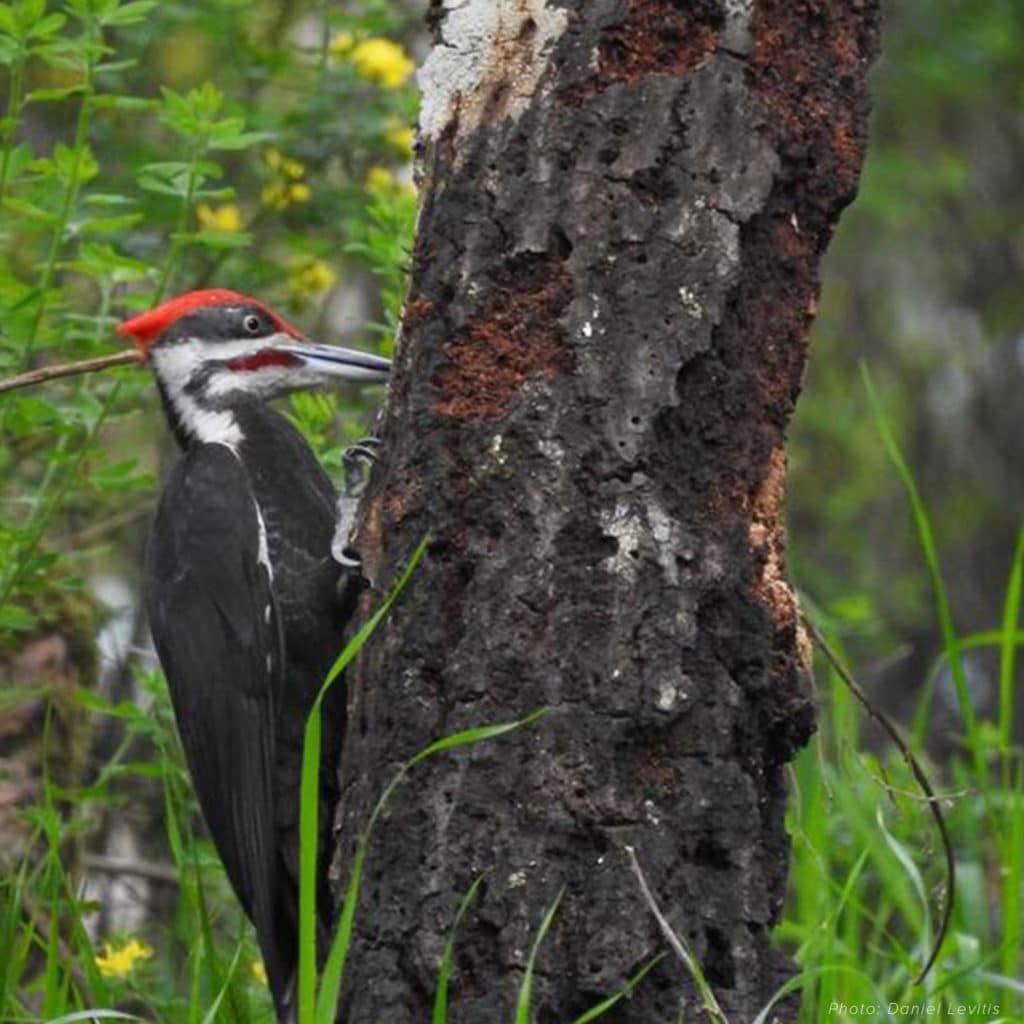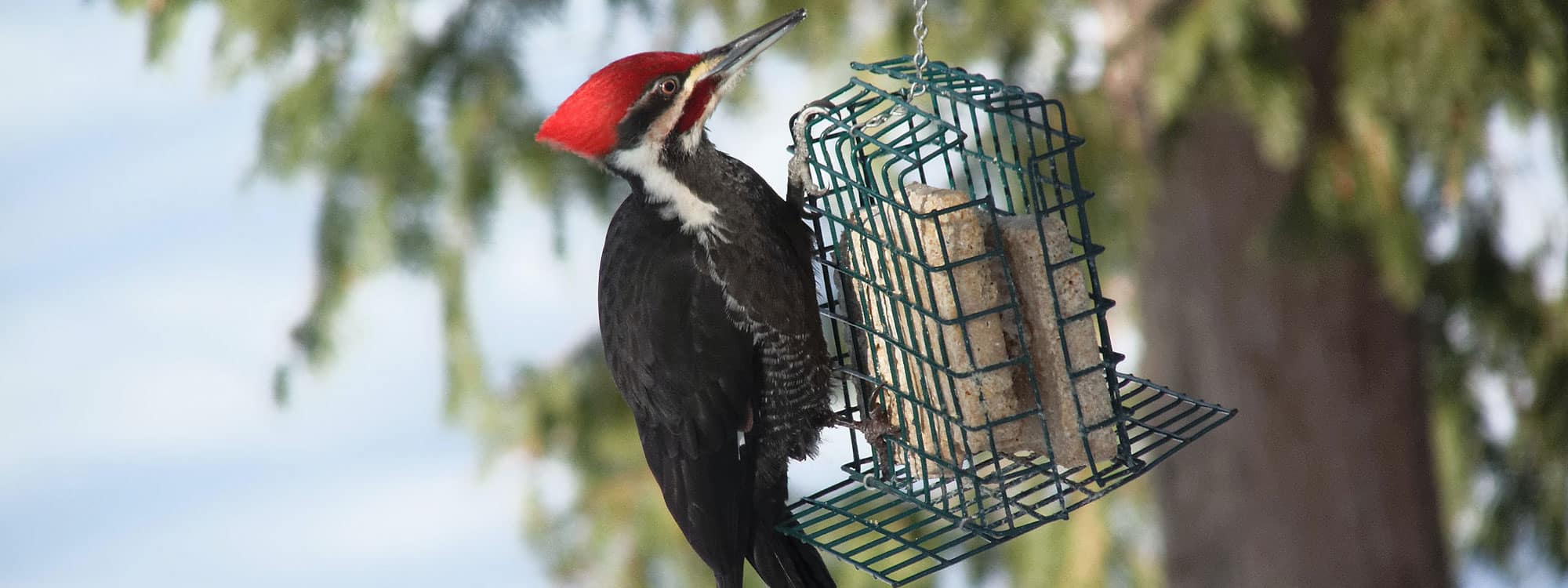Big, black and white with a flaming red crest, when you see this woodpecker, you’ll know it! Chances are you’ll hear it long before you spot the magnificent bird—whether it’s screeching above a forest canopy or drumming high up on a redwood tree. It’s the pileated woodpecker!
Not common, but not rare either, this king of the woodpeckers lives in forests across the U.S. from the California Coast across the northern states and down into the deep south. I’ve been stopped in my tracks every time I’ve encountered these raucous and elegant birds on walks or while birdwatching.
You can usually get a good look as it is the biggest of all woodpeckers, similar in size to a crow or raven. It would be second in size only to the ivory-billed woodpecker which is most likely extinct.
The fascinating pileated woodpecker has the weirdest of names. It is derived from the word “pileus” meaning “a cap.” It is pronounced in two ways: PIE-lee-ay-tid, PILL-ee-ay-tid. Either way, it doesn’t matter, as this wily bird and its scarlet cap will get your attention.
In fact, these impressive birds inspired the creation of the cartoon character Woody the Woodpecker, as explained by expert naturalist Michael Ellis in a KQED Perspective.
About the Pileated Woodpecker
The population of pileated woodpeckers appears to be increasing in California according to the Audubon Christmas Bird Count. In Sonoma County, over recent decades the number of resident birds have increased from 6 to 20 confirmed nests per year, and from 68 probable or possible to 555 possible or probable nests, according to the Sonoma County Breeding Bird Atlas.
The pileated is one of 11 species of woodpeckers that live in Sonoma County. Like other woodpeckers, the pileateds have strong feet with two toes forward and two back—allowing them to cling and grasp onto trunks and branches. Stiff tail feathers help keep balance.

The flashy pileateds nest and breed in large tree cavities they excavate with powerful chisel bills in large oaks and redwoods and other tree types throughout the Bay Area. They are residents year-round and mate for life. After raising their brood each year, they abandon their nest, making room for bluebirds, squirrels, and others who move in later. Their favorite food is the carpenter ant that they dig out of dead logs and trees and lap up with long, sticky tongues. No, they don’t usually eat acorns, but do feed on various insects, nuts and fruit. Listen to Bird Notes about pileated woodpeckers here.
Watching the Wiley Woodpecker
Here in Sonoma Valley, in the southeast corner of Sonoma County, we often see these woodpeckers at Sugarloaf Ridge State Park in the Mayacamas range and in Jack London State Park on the flanks of Sonoma Mountain. Last fall, I took good friends visiting from Australia to Jack London. We heard the cry of the pileated deep in a stand of redwoods. Soon we located it and watched it fuss about while they took a million pictures. They may have their laughing kookaburras, but we have our wily woodpeckers.
During shelter in place, these confident creatures seem to be moving closer into humanity as we’ve seen elsewhere now that the majority of us are staying home. I for one have been hearing one in the trees near where I live in Boyes Hot Springs, though I haven’t seen it yet. I also noticed the incessant mockingbirds have added the call to their repertoire this year!
Neighbors were excited to spot a bird taking up residence in the trees around Fetters Hot Springs.

“Taking my kids for a walk around the block yesterday, we encountered this gorgeous Pileated Woodpecker,” posted Daniel Levitis on Next Door. “It let us watch it work. Far from hurting the tree, it was carefully removing the rotting parts and wood-boring insects. This is a crisis for all of us, but nature’s beauty and resilience remind me that there is still so much good, so much to look forward to. Take good care of yourself and don’t forget the things that make you happy.”
Another neighbor chimed in: “I have lived in this neighborhood for almost 45 years and have only seen one pileated woodpecker.”
If we keep an ear to the trees and an eye to the skies, we might just see some more!




